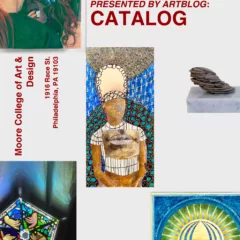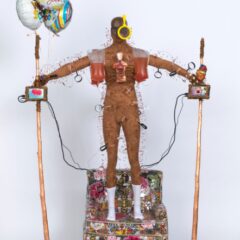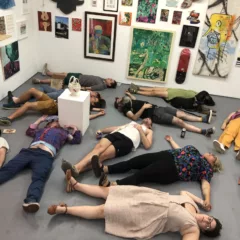[Andrea reviews two more books; one focuses on artists who eschew the market completely, while another focuses on the effects of travel and displacement on art-making and curation. Read her first installment here. — the Artblog editors]
Purposefully missing the market

While most artists support themselves with work beyond the art market, this book is about those who have chosen, as their art practice, not to produce objects that circulate within a market economy. It is an extremely welcome and well-researched survey that should be of great interest to both artists, and scholars who are concerned with alternatives to the current winner-takes-all, market-driven nexus of museums, galleries, art fairs, and auction houses. Most of the articles are clearly written and jargon-free, and the volume reads as a thoughtful examination of the subject, rather than a manifesto. It would make a suitable text for a graduate seminar on the subject.

Karen van den Berg reviews the history and various theoretical positions behind the decision to work outside the exhibition system, suggesting several possible models for the practice, and gives some examples: 1) the artist as researcher (Jesko Fezer), 2) the artist as social engineer (Dan Peterman), 3) the artist as project director (Christo and Jeanne-Claude), 4) the artist as an activist (Oliver Ressler, Yevgeniy Fiks), and 5) the artist as an agent of art (Andrea Fraser).

The essays address a range of issues around the topic of art production and activity: the relationship between symbolic and economic valuations of art; the reasons artists might forgo making objects for sale; artists’ collectives and networks; the relationship between art praxis and political praxis; the repressive implications of the free market; and negotiations between artistic autonomy and art that engages with the broader world.
The compilation includes nine scholarly articles–whose authors come from art history and theory, sociology, and political science–as well as interviews with a range of artists, including Hans Haacke, Pablo Helguera, and Gregory Scholette. The majority of these scholars work in Germany, where research on the cultural sector appears to be well-established and funded, with others based elsewhere in Northern Europe, the U.K., and Israel. Other than some discussions about the impact of national cultural policies and funding, the essays should be equally pertinent for the U.S.
Readers interested in the subject may also want to check out some websites I have come upon:
- http://www.skor.nl/eng/ Foundation for Art and Public Domain
- http://artefact.mi2.hr/_a01/index.htm ART-e-FACT
- http://www.justseeds.org/ Just Seeds Artists’ Cooperative
Art and location
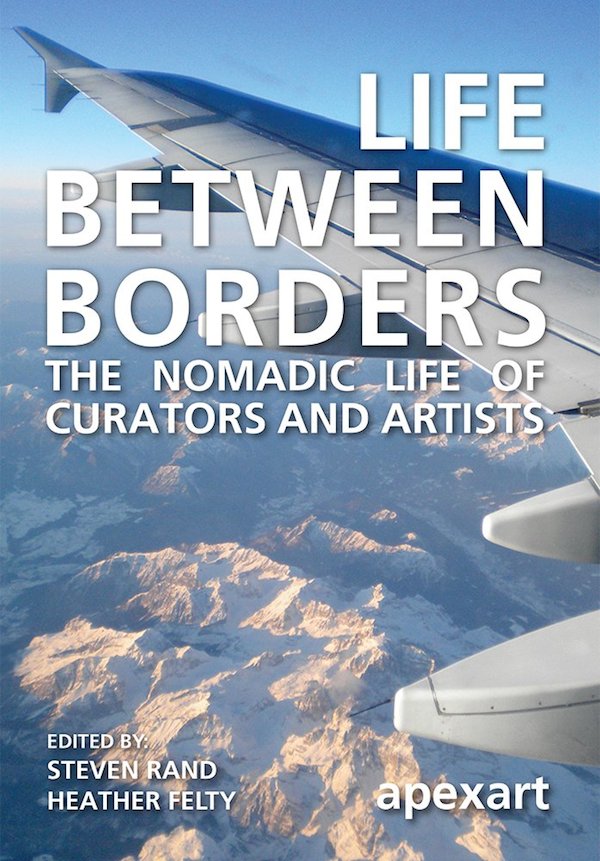
This group of commissioned essays addresses the implications of widespread travel, as well as forced migration, upon art and curatorial practice and identity. It is the fourth compilation put out by New York City alternative space apexart, which, among its other activities, runs an overseas residency program that it describes as a “simulated move to another city”. One of the book’s distinctions is that the authors are not the usual suspects who contribute to many volumes of essays on current art. Authors include Lamia Joreige, an artist working in Beirut; Gitanjali Dang, a curator based in Bombay; Yannis Ziogas, a painter who teaches at the University of Western Macedonia; and Mahita El Bacha Urieta, a curator and consultant in cultural policy who has worked in the U.K., Europe, and the Middle East.
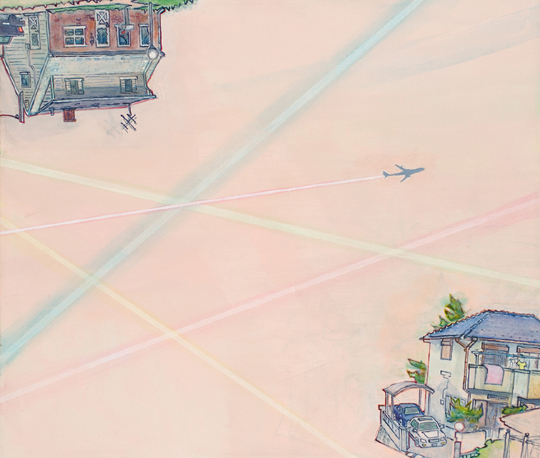
The authors take various approaches, and those that broach the subject acknowledge that it is foolish to compare footloose artists and curators with immigrants forced out of their homelands because of war and politics.
Pascal Gielen, director of the Research Centre for Arts in Society at Groningen University, assumes that nomadic artists intend their art to effect oppositional, political change–a major assumption–and suggests that they must give up singular authorship if they are to be successful. Ziogas describes the impact of an Outward Bound-type group trip in an unfamiliar landscape, still littered with evidence of war, and its impact on his life and art.

The artist Jimmie Durham, who has led a particularly peripatetic life across several continents, describes his identity as formed through a fortuitous process of reading whatever books he found left behind by others. This particularly resonates with me; lacking strong ties to either historical material culture or specific territory, I always perceived my identity as a product of my education–although it was considerably more conventional than Durham’s–rather than a product of location.
Another artist, Sebastien Sanz de Santamaria, describes the mixture of aroused survival instincts, curiosity, and desire that displacement evokes, as spurring creativity. Many of the authors acknowledge that, while extensive travel may result in only superficial knowledge of other cultures, it always contributes to self-knowledge.


